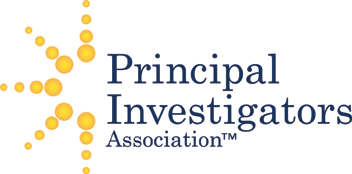No. 127: Get Your Foot in the Door With a Winning Letter of Inquiry
Don’t get passed over for foundation funding before getting your foot in the door. Know what to include and exclude in your next letter of inquiry and how to make your best first impression count.
A single email can mean the difference between scoring foundation funding and going home empty-handed.
That’s because many foundations ask you to email a letter of inquiry before submitting a grant application. This allows them to ensure your project is an appropriate match before they take the time to read a lengthy proposal.
Cynthia Duncan, PhD, is a former program director at the Ford Foundation, where she was in charge of 15 program officers (POs). And she says they all required a written inquiry before talking to a PI.
“Write a strong, one-page or half-page letter about your research,” she says. “In your email, say you will follow up with a call the following week. This gives a PO time to think about your proposal.”
What to include in a letter
According to the Foundation Center, your letter of inquiry should be no more than three pages. And it should contain the following:
- An introduction. Include your organization’s name, the amount of funding needed, a project description, your methodology, a timetable for completion, and your staff’s qualifications.
- A description of your organization. Explain why your institution is the right environment for the project. Include a brief history and account of current programs.
- A statement of need. Convince the foundation there is an important demand your project can meet.
- The methodology. Describe the project, including major activities, names and titles of key project staff, and your objectives.
- Other funding sources you approached.
- A final summary, in which you restate your project’s intention.
Sell yourself and your project
Your letter should convince the foundation of your credibility in your research area, says Peter Feibelman, PhD, Senior Scientist of Energy Sciences at Sandia National Laboratories. Feibelman is the author of “A PhD Is Not Enough: A Guide to Survival in Science,” which includes a chapter on getting funded.
You should also explain how your research will make a difference in your field, according to Doris Parent, Associate Director of Corporate and Foundation Relations at Gallaudet University.
“Make it seem like your project is replicable, it’s going to have major impact outside of a particular community, and other communities and universities can pick up this model and move with it as well,” Parent says.
Keep it brief
Your letter of inquiry should be similar to the Project Summary/Abstract portion of an NIH grant proposal, according to Erik Dent, PhD, Assistant Professor at University of Wisconsin School of Medicine and Public Health. In 2010, Dent received a $225,000, three-year grant from the Whitehall Foundation to research the role of dynamic microtubules in dendritic spines.
Dent says your letter should include a little bit of background. Highlight relevant previous findings, and tie them in with your project. Then, briefly outline what you plan to do.
“Don’t provide too much information,” Feibelman warns. “You don’t want your ideas to be spreading far and wide without any benefit to you.”
To receive educational articles like this one, sign-up today to PIA’s free bi-monthly eNewsletter “Science Pro Insider”!
Science Pro Insider is the only eNewsletter that focuses 100% on the managerial aspects of your lab operations and your science career. It shows you how to easily manage your lab better and faster, and provides easy-to-apply expert tips, shortcuts and best practices so you can focus on the research you’re doing right now. Subscribe today!
Comments (0) | Read More...




